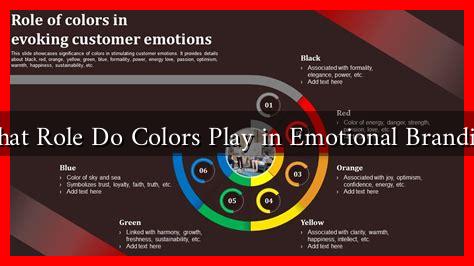-
Table of Contents
What Role Do Colors Play in Emotional Branding?
In the world of marketing and branding, colors are not just aesthetic choices; they are powerful tools that evoke emotions and influence consumer behavior. Emotional branding is the practice of building a brand that resonates with consumers on a deeper emotional level, and color plays a pivotal role in this process. This article explores how colors impact emotional branding, supported by research, examples, and case studies.
The Psychology of Color
Colors have a profound psychological impact on individuals. According to a study by the Institute for Color Research, people make a subconscious judgment about a product within 90 seconds of initial viewing, and between 62% to 90% of that assessment is based on color alone. This highlights the importance of color in branding.
- Red: Often associated with excitement, passion, and urgency. Brands like Coca-Cola and Target use red to stimulate appetite and encourage impulse buying.
- Blue: Conveys trust, reliability, and calmness. Companies like Facebook and IBM utilize blue to foster a sense of security and professionalism.
- Green: Represents nature, health, and tranquility. Brands like Whole Foods and Starbucks use green to promote sustainability and wellness.
- Yellow: Evokes feelings of happiness and optimism. Brands like McDonald’s and IKEA use yellow to attract attention and create a cheerful atmosphere.
- Purple: Associated with luxury, creativity, and wisdom. Brands like Hallmark and Crown Royal leverage purple to convey sophistication.
Case Studies in Color Usage
Several brands have successfully harnessed the power of color in their emotional branding strategies. Here are a few notable examples:
1. Coca-Cola
Coca-Cola’s iconic red color is synonymous with the brand itself. The color red not only grabs attention but also stimulates appetite and evokes feelings of excitement. Coca-Cola’s marketing campaigns often emphasize happiness and togetherness, reinforcing the emotional connection consumers have with the brand.
2. Tiffany & Co.
The famous “Tiffany Blue” is a trademarked color that represents luxury and exclusivity. This specific shade of blue evokes feelings of sophistication and elegance, making it instantly recognizable. Tiffany & Co. has successfully created an emotional bond with consumers, associating their products with special moments and celebrations.
3. Apple
Apple’s minimalist design and use of white space convey simplicity and innovation. The clean, sleek aesthetic of Apple products, combined with their use of color, creates a sense of modernity and sophistication. This emotional branding strategy has helped Apple cultivate a loyal customer base that identifies with its values of creativity and cutting-edge technology.
Statistics on Color and Consumer Behavior
Research supports the idea that color significantly influences consumer behavior. Here are some compelling statistics:
- 85% of consumers make purchasing decisions based on color.
- Color increases brand recognition by up to 80%.
- People are more likely to remember a brand if its color is consistent across all platforms.
Choosing the Right Colors for Your Brand
When selecting colors for your brand, consider the following steps:
- Understand Your Audience: Research your target demographic to determine which colors resonate with them.
- Define Your Brand Personality: Identify the emotions you want your brand to evoke and choose colors that align with those feelings.
- Test and Iterate: Conduct A/B testing with different color schemes to see which ones yield the best response from your audience.
Conclusion
Colors play a crucial role in emotional branding, influencing consumer perceptions and behaviors. By understanding the psychology of color and leveraging it effectively, brands can create deeper emotional connections with their audience. As demonstrated by successful case studies, the right color choices can enhance brand recognition, foster loyalty, and ultimately drive sales. In a competitive marketplace, harnessing the power of color is not just an option; it is a necessity for brands looking to stand out and resonate with consumers.
For further reading on the psychology of color in branding, you can explore resources like Color Psychology.

